 Who is the blogger?
Who is the blogger?
To see a simple English version of reviews about some of the movies, click on the ESL section of Midnight Oil.
Entries in oldies (3)
It's a Wonderful Life (1946)
“It’s a Wonderful Life” is the kind of film everyone loves to see (and see again) no matter what time of year it is. It seems like the more things change, the more a film like this stays the same. It provides a kind of film-watchers’ comfort food as we hurtle at breakneck speed through the ensuing decades of personal, societal, and cinematic evolution. Perhaps some of us are not so sure anymore of why exactly we like this movie, how the tradition of watching it got started or if the film is really all that good in the first place. We know that it’s a 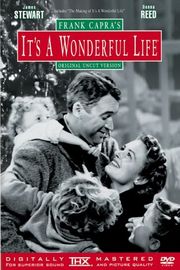 part of a well-worn tradition (like eating fruitcake and turkey giblet gravy at Christmas). For that reason, if for no other, we are bound to see it again some time.
part of a well-worn tradition (like eating fruitcake and turkey giblet gravy at Christmas). For that reason, if for no other, we are bound to see it again some time.
There’s just something terribly likeable about that everyman character, George Bailey (played by Jimmy Stewart). It’s not that he’s all that good looking or extremely clever or exceptionally charming or anything else. He’s just supposed to be an ordinary “nice guy”. In this big old mean old world, even nice guys can have some pretty big problems. At a certain point, George’s charmed life comes crashing in upon him and he finds  himself about to jump off a bridge to put an end to it all. George Bailey wonders out loud if his life has really been worth living. A guardian angel (played by Henry Travers) is immediately dispatched from the heavenly realms in order to put things to rights. With the help of the unearthly messenger, George comes to realize that his life has had a tremendous impact, not only on his immediate family members, but on the whole community.
himself about to jump off a bridge to put an end to it all. George Bailey wonders out loud if his life has really been worth living. A guardian angel (played by Henry Travers) is immediately dispatched from the heavenly realms in order to put things to rights. With the help of the unearthly messenger, George comes to realize that his life has had a tremendous impact, not only on his immediate family members, but on the whole community.
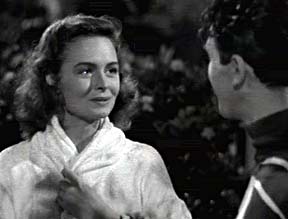 Wholesome is a good word to describe this film. It’s not a type of picture that you would see made today. Maudlin might be another word employed by some detractors of the film who would have little patience for such a cinematic work. But then, such people might not really appreciate how things work and what exactly goes on around the family dinner table each Christmas at our house. There are just certain dishes that Mother makes for every Christmas dinner (like the orange
Wholesome is a good word to describe this film. It’s not a type of picture that you would see made today. Maudlin might be another word employed by some detractors of the film who would have little patience for such a cinematic work. But then, such people might not really appreciate how things work and what exactly goes on around the family dinner table each Christmas at our house. There are just certain dishes that Mother makes for every Christmas dinner (like the orange 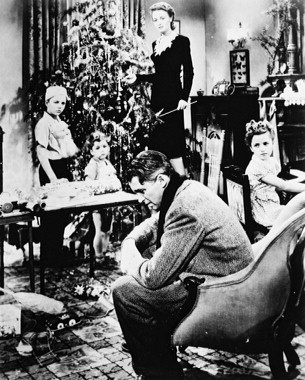 jellied salad or the buttered spicy squash). If you come as a guest for the dinner every year, you know that you are going to have to eat those dishes. It does no good to complain. You might as be reconciled with the traditional menu offering and find the virtues of the said salad. You’ll enjoy things a lot more if you do. And after all, what’s so bad about being good? Milk is wholesome too. It can be quite pleasant if you are used to it. And you would probably miss it if you could
jellied salad or the buttered spicy squash). If you come as a guest for the dinner every year, you know that you are going to have to eat those dishes. It does no good to complain. You might as be reconciled with the traditional menu offering and find the virtues of the said salad. You’ll enjoy things a lot more if you do. And after all, what’s so bad about being good? Milk is wholesome too. It can be quite pleasant if you are used to it. And you would probably miss it if you could 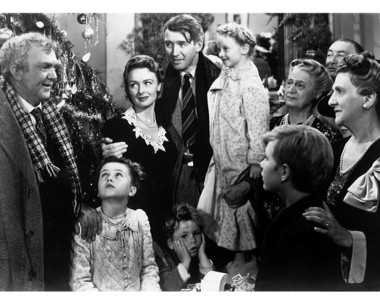 no longer have it. That’s kind of how I feel about “It’s a Wonderful Life”.
no longer have it. That’s kind of how I feel about “It’s a Wonderful Life”.
>>Not so Real Life: Sarah takes a chance on striking out in a new direction. Dealing with disappointments
>>More to see: Looking for more out of life?
See the three minute summary of "It's a Wonderful Life" (1946). Also see the scene where George lassos the moon.
The Bicycle Thief (1948)
 “The Bicycle Thief” (1948), is a small masterpiece on celluloid that captures the human drama of a family man struggling to maintain his livelihood and his dignity by recovering a stolen bicycle in post-war Rome. This Italian language film by Vittorio de Sica maintained my interest even with the English subtitles. Taking in a film through translation may be akin to listening to a symphony orchestra through a tin can telephone. One is sure to miss something in the translation. However, the acting on the part of the father and son duo (played
“The Bicycle Thief” (1948), is a small masterpiece on celluloid that captures the human drama of a family man struggling to maintain his livelihood and his dignity by recovering a stolen bicycle in post-war Rome. This Italian language film by Vittorio de Sica maintained my interest even with the English subtitles. Taking in a film through translation may be akin to listening to a symphony orchestra through a tin can telephone. One is sure to miss something in the translation. However, the acting on the part of the father and son duo (played 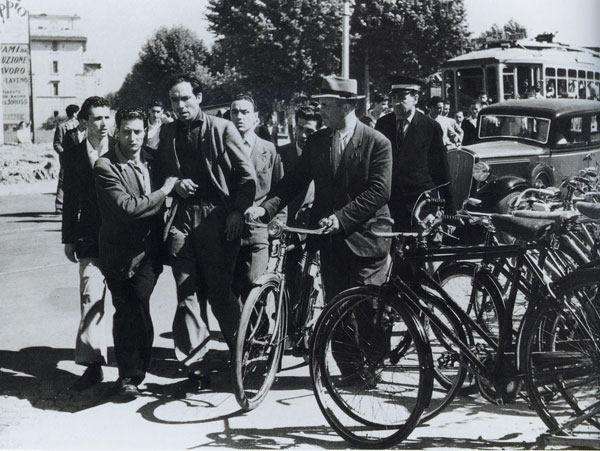 by Lamberto Maggiorani and Enzo Staiolo respectively) is so convincing both through dialogue and the non-verbal, that one can forgive the ongoing necessity of the subtitles. Following the everyman character about the streets of Rome in his desperate search for his bicycle gives us the full range of an emotional workout and a depth of sociological analysis that the “official bus tour” of the famous Eternal City would never afford.
by Lamberto Maggiorani and Enzo Staiolo respectively) is so convincing both through dialogue and the non-verbal, that one can forgive the ongoing necessity of the subtitles. Following the everyman character about the streets of Rome in his desperate search for his bicycle gives us the full range of an emotional workout and a depth of sociological analysis that the “official bus tour” of the famous Eternal City would never afford.
>>More to see: Looking for more out of life?
See a trailer for "The Bicycle Thief" (1948)
Laura (1944)
Picture Perfect
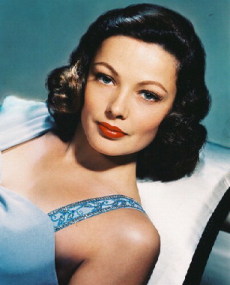 Gene Tierney’s breathtaking beauty in the title role adds to the performance of the ensemble cast accompanied by the memorable score composed by David Raksin. It all goes together to make this unforgettable classy film noir classic. TVOntario’s Interviews, (Aug.18,’07) include contributions from the leading man, Dana Andrews and director, Otto Preminger. The Interviews contain revelations into the evolution of this wonderful film that are almost as enjoyable as the plot reversals contained in the film itself .
Gene Tierney’s breathtaking beauty in the title role adds to the performance of the ensemble cast accompanied by the memorable score composed by David Raksin. It all goes together to make this unforgettable classy film noir classic. TVOntario’s Interviews, (Aug.18,’07) include contributions from the leading man, Dana Andrews and director, Otto Preminger. The Interviews contain revelations into the evolution of this wonderful film that are almost as enjoyable as the plot reversals contained in the film itself .
See the "Laura" Video Trailers here
My tastes in home décor definitely run toward the classic . A mantle clock under glass sports 19th century ladies and gents caught up in an eternal circular dance. A finely upholstered wing chair sits beside a gas fireplace accompanied by a brass table lamp inviting one to read into the late hours of the night. Lace curtains, a finely finished oval oak coffee table and a portrait of two young ladies in linen circa 1830 over the mantelpiece complete the picture.
It sounds so idyllic and serene – and so it was when I first designed it all in my mind’s eye. The original design for my living room didn’t take into account the stresses and strains of the invasions of real life: LEGO strewn around the room with my son’s creative structures filling up all available table space and more, protective throws on the furniture continually askew, cookie crumbs under the couches, the clock dancers’ whirling waltz interrupted by batteries that have ceased to function.
Ahh, this is the life. At least, this is my life.
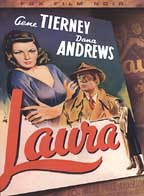 In the opening scene of the film, we first meet Laura through taking a virtual walking tour of her home. In the days before “video visits” in online real estate listings, it must have been something of a novelty to inspect the interior of another person’s home in their absence through the camera lens – a kind of early video voyeurism. Waldo Lydecker, ably played by Clifton Webb, is more than happy to oblige as the tour’s host. Lydecker’s character provides voice over commentary for the house tour and for the rest of the film.
In the opening scene of the film, we first meet Laura through taking a virtual walking tour of her home. In the days before “video visits” in online real estate listings, it must have been something of a novelty to inspect the interior of another person’s home in their absence through the camera lens – a kind of early video voyeurism. Waldo Lydecker, ably played by Clifton Webb, is more than happy to oblige as the tour’s host. Lydecker’s character provides voice over commentary for the house tour and for the rest of the film.
The camera pans over various art objects in the apartment coming to rest on an oil painting of Laura herself. The portrait is very lifelike and very beautiful (It was a photo of the dazzling Gene Tierney, painted over to look like an oil portrait). The narrator intones, “I, Waldo Lydecker, was the only one who really knew her.” As we soon learn, Lydecker has no problems assuming that his opinion is the final word, in fact the only word worth knowing, on just about any subject.
 Playing opposite Waldo Lydecker is Mark McPherson (Dana Andrews), a tight-lipped police detective who also knows his own mind, although he is perhaps less hasty in forming and reforming his opinions about a situation. Andrews plays the part of the detective as holding things very close to his chest, with hardly a ripple of emotion permitted to escape. He keeps himself calm by playing a little handheld pinball game. McPherson says that it helps him to keep his mind clear.
Playing opposite Waldo Lydecker is Mark McPherson (Dana Andrews), a tight-lipped police detective who also knows his own mind, although he is perhaps less hasty in forming and reforming his opinions about a situation. Andrews plays the part of the detective as holding things very close to his chest, with hardly a ripple of emotion permitted to escape. He keeps himself calm by playing a little handheld pinball game. McPherson says that it helps him to keep his mind clear.
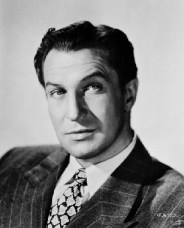 The trio of men who surround Laura is completed by Shelby Carpenter, a Southern playboy, labelled a “male beauty in distress” by Lydecker. Carpenter’s prime function in life seems to be to mooch off of those who can afford his company. His other prime function, at least in this story, is to serve as the all too obvious prime suspect in Laura’s murder. As noted in the Interviews (Aug.18,’07), a decision was made to heighten the contrasts in personality of the three male characters so that they would play off one another.
The trio of men who surround Laura is completed by Shelby Carpenter, a Southern playboy, labelled a “male beauty in distress” by Lydecker. Carpenter’s prime function in life seems to be to mooch off of those who can afford his company. His other prime function, at least in this story, is to serve as the all too obvious prime suspect in Laura’s murder. As noted in the Interviews (Aug.18,’07), a decision was made to heighten the contrasts in personality of the three male characters so that they would play off one another.
As for the character of Laura herself, it seems to be a case of “absence makes the heart grow fonder”. Her conspicuous absence during the first part of the film adds all the more mystery to her character and suspense to the plotline. Laura seems to be altogether too lovely to be real; the “girl next door”, an independent self-made woman, smart and sexy, sweet and sophisticated.
 Laura is a lot like the theme music that David Raksin has composed for her . The repetition of the “Laura” theme music, although it comes up over and over again in different settings and at different tempos, is never tiresome, but somehow manages to add to the haunting beauty of Laura herself. No wonder detective Mark McPherson falls for her like a ton of bricks, sight unseen. In fact, everyone around Laura seems to be bewitched by her. They all adore her from Betsy the parlour maid to that cranky old columnist, Lydecker, who seems so full of himself that there couldn’t possibly be room in his life for anyone else.
Laura is a lot like the theme music that David Raksin has composed for her . The repetition of the “Laura” theme music, although it comes up over and over again in different settings and at different tempos, is never tiresome, but somehow manages to add to the haunting beauty of Laura herself. No wonder detective Mark McPherson falls for her like a ton of bricks, sight unseen. In fact, everyone around Laura seems to be bewitched by her. They all adore her from Betsy the parlour maid to that cranky old columnist, Lydecker, who seems so full of himself that there couldn’t possibly be room in his life for anyone else.
But there it is. Waldo Lydecker has been bewitched. Or perhaps possessed is a better word for it. There is this tricky business of who possesses whom in this odd December/May relationship between Waldo and Laura. As the story unfolds, it becomes clear that Lydecker is not only frightfully possessive about certain objects of art that he wishes to reclaim from Laura’s apartment after the investigation, but that he is overly attached to the young lady herself. Making use of a razor sharp wit and his poison pen (a goose quill dipped in venom, by his own report), Lydekker manages to dispose of Laura’s suitors quite handily one by one.
And what delicious dialogue has been served up for Lydecker via Vera Caspary’s novel of the same name and the team of screenwriters! Oh my, Waldo: “Young woman: either you have been raised in some incredibly rustic community where good manners are unknown, or you suffer from the common feminine delusion that the mere fact of being a woman exempts you from the rules of civilized conduct. Possibly both.” No wonder Clifton Webb was lured back to Hollywood from the New York stage after an absence of almost 20 years by such a scrumptious part as Waldo Lydecker. It was a great success for Webb as an actor, relaunching an onscreen career.
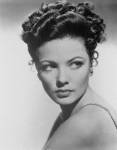 Laura has evidently had a profound effect on those around her (including some, like McPherson, who haven’t even met her yet in person). Lydecker claims that Laura’s effect on him has been an entirely beneficial one: “Laura considered me to be one of the wisest, the wittiest, the most interesting men she had ever met. I was in complete accord with her on that point. . . .You may not understand this but I tried to become the kindest, gentlest, most sympathetic man in the world.” McPherson quips in response, “Have any luck?”
Laura has evidently had a profound effect on those around her (including some, like McPherson, who haven’t even met her yet in person). Lydecker claims that Laura’s effect on him has been an entirely beneficial one: “Laura considered me to be one of the wisest, the wittiest, the most interesting men she had ever met. I was in complete accord with her on that point. . . .You may not understand this but I tried to become the kindest, gentlest, most sympathetic man in the world.” McPherson quips in response, “Have any luck?”
Although it may be in doubt in the beginning, by the end of the film we find out that Lydecker has not had much luck either in remaking himself or in keeping Laura’s affections to himself. Lydecker has had some remarkable success in maintaining appearances, thanks to his native intelligence and his wonderful storytelling abilities, but in the end, that’s all that it is; a well crafted story that sounds very convincing on the surface.
Laura reveals to Mark that Lydecker has this uncanny ability to rewrite history, not only for his hearers, but also for himself. In explaining to the detective why she is forever grateful to Lydecker for giving her a start in her career, Laura lets slip that the whole incident of the pen endorsement was a story Lydecker invented for his column. The truth about the situation was considerably less spectacular and less complimentary to both parties involved. It was all a skilfully woven fabrication that takes everyone in(including the audience).
 It takes Laura some time to sort out the truth from the fiction. It also takes a process of various unveilings in order for her to sort out her feelings towards the men in her life. Of course the process is as fascinating and as entertaining as the Dance of the Seven Veils. It all culminates with a dramatic rescue by the knight in shining armour (Andrews) and the unmasked villain (Lydecker)getting his comeuppance.
It takes Laura some time to sort out the truth from the fiction. It also takes a process of various unveilings in order for her to sort out her feelings towards the men in her life. Of course the process is as fascinating and as entertaining as the Dance of the Seven Veils. It all culminates with a dramatic rescue by the knight in shining armour (Andrews) and the unmasked villain (Lydecker)getting his comeuppance.
If only things in real life in complicated and dangerous relationships could get sorted out as easily, preferably within a 2 hour timeframe. It would be so much easier and so much more satisfying than the kinds of painful and confusing relational gymnastics that happen in the real world. But hey, this is Hollywood ! Pass the popcorn and let’s all settle down for a cozy evening’s tête à tête with a wonderful gem like “Laura”.
Suggested Reading:
-
INDb reports that the character of Waldo Lydecker is based loosely on the real life personage of Alexander Woollcott
-
Dangerous Liaisons: seeing your way through a codependent friendship
-
Avoid being someone’s prized possession: be loved for who you really are
-
Breakawy: escaping the shark pool of an emotionally abusive relationship
-
Hero to the rescue: grounds for a safe relationship





